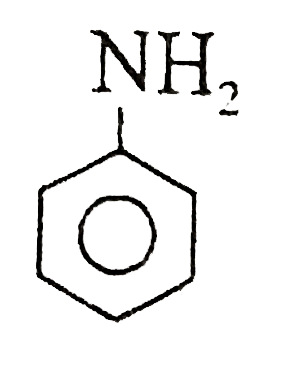A OBr−−−−→CHBr3 the compound is :
Isopropyl alcohol
Isobutyl alcohol
Neopentyl alcohol
n-Butanol
The correct Answer is:A
To determine the compound A that reacts with OBr−→CHBr3, we need to identify the type of reaction taking place and the necessary conditions for this reaction.
1. Identify the Reaction Type:
The reaction is a Haloform reaction, which typically involves the conversion of a methyl ketone or a compound that can be oxidized to a methyl ketone into a haloform (like chloroform, bromoform, or iodoform) in the presence of a halogen and a base.
Hint: Recall that Haloform reactions require a methyl ketone structure (C=O with a methyl group).
2. Determine the Necessary Structure:
For the Haloform reaction to occur, the compound must have a methyl ketone structure, which is characterized by the functional group C=O adjacent to a CH3 group (i.e., C(=O)CH3).
Hint: Look for compounds that can be oxidized to form a methyl ketone.
3. Examine the Given Options:
- Isopropyl Alcohol: This is a secondary alcohol that can be oxidized to acetone (a methyl ketone).
- Isobutyl Alcohol: This is a primary alcohol that oxidizes to an aldehyde, which does not have the methyl ketone structure.
- Neopentyl Alcohol: This is also a primary alcohol that oxidizes to an aldehyde, lacking the methyl ketone structure.
- Normal Butanol: This is another primary alcohol that oxidizes to an aldehyde, again lacking the methyl ketone structure.
Hint: Identify which of these compounds can yield a methyl ketone upon oxidation.
4. Perform the Oxidation:
- Isopropyl Alcohol: Oxidizes to acetone (CH3COCH3), which has the required methyl ketone structure.
- Isobutyl Alcohol, Neopentyl Alcohol, and Normal Butanol: All oxidize to aldehydes, which do not have the methyl ketone structure.
Hint: Only the compound that can be oxidized to a methyl ketone will participate in the Haloform reaction.
5. Conclusion:
Since only isopropyl alcohol can be oxidized to form a methyl ketone, it is the only compound that will react with OBr− to produce CHBr3.
Final Answer: The compound A is Isopropyl Alcohol.
The reaction is a Haloform reaction, which typically involves the conversion of a methyl ketone or a compound that can be oxidized to a methyl ketone into a haloform (like chloroform, bromoform, or iodoform) in the presence of a halogen and a base.
For the Haloform reaction to occur, the compound must have a methyl ketone structure, which is characterized by the functional group C=O adjacent to a CH3 group (i.e., C(=O)CH3).
- Isopropyl Alcohol: This is a secondary alcohol that can be oxidized to acetone (a methyl ketone).
- Isobutyl Alcohol: This is a primary alcohol that oxidizes to an aldehyde, which does not have the methyl ketone structure.
- Neopentyl Alcohol: This is also a primary alcohol that oxidizes to an aldehyde, lacking the methyl ketone structure.
- Normal Butanol: This is another primary alcohol that oxidizes to an aldehyde, again lacking the methyl ketone structure.
- Isopropyl Alcohol: Oxidizes to acetone (CH3COCH3), which has the required methyl ketone structure.
- Isobutyl Alcohol, Neopentyl Alcohol, and Normal Butanol: All oxidize to aldehydes, which do not have the methyl ketone structure.
Since only isopropyl alcohol can be oxidized to form a methyl ketone, it is the only compound that will react with OBr− to produce CHBr3.
Similar Questions
Knowledge Check
AOBr+−−−→CHBr3
The compound is :AIsopropyl alcoholBIsobutyl alcoholCNeopentyl alcoholDn-ButanolConsider the following sequence of reactions
Compounds [A]reduction−−−−→[B]HNO2−−−→CH3CH2OH The compound [A] is .ACH3CH2CNBCH3NO2CCH3NCDCH3CNConsider the following sequence of reactions
Compounds [A]reducation−−−−−→[B]HNO2−−−→CH3CH2OH The compound [A] is .ACH3CH2CNBCH3NO2CCH3NCDCH3CN
In the following sequence of reactions, the alkene affords the compound 'B'
CH3CH=CHCH3O3−−→AH2O−−→ZnB, The compound B is :
View SolutionBariumadipateDrydistillation−−−−−−−−→(A)MeCO3H−−−−−→(B)
The compounds (A) and (B), respectively, are:
View SolutionAcetonitrile Hydrolysis−−−−−→P, then the compound P is
View SolutionIn this chemical reactions:
 NaNO2−−−−−→HCl,278k A HBF4−−−→ B the compounds 'A' and 'B'
NaNO2−−−−−→HCl,278k A HBF4−−−→ B the compounds 'A' and 'B'
respectively are
View Solution (i)CH3CHO−−−−−−−→(ii)H3O+ (A) HBr−−→ (B)
(i)CH3CHO−−−−−−−→(ii)H3O+ (A) HBr−−→ (B)
The compounds (A) and (B)
View Solution

